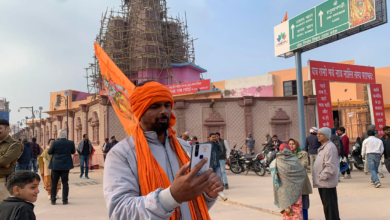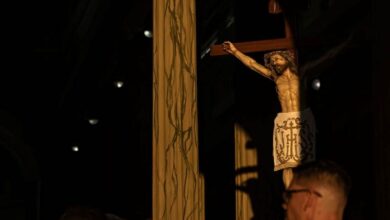Preserving Latin America’s Moroccan Jewish Heritage

The inaugural Sephardic Moroccan Jewish Latin American Forum in Essaouira highlighted the rich history and cultural connections between Moroccan Jews and Latin America, fostering discussions on heritage preservation and community bonds. This article is adapted from a report by The Jerusalem Post.
The ancient port city of Essaouira, formerly known as Mogador, in western Morocco, is steeped in Jewish history. The community’s roots date back to the 1760s when Sultan Mohamed ben Abdallah invited 10 Jewish families to settle and help build the town into a major port city, managing trade from European cities.
This past June, Essaouira hosted a momentous event: the inaugural Sephardic Moroccan Jewish Latin American Forum. Organized by the Mimouna Association under the DAKIRA initiative, a USAID-funded project, the forum had faced numerous challenges and postponements due to geopolitical tensions and the tumultuous events of Oct. 7. However, it finally convened, bringing together Jewish scholars, community leaders, and historians from around the world, marking a significant milestone in the preservation of Jewish heritage.
Held in the kasbah area of the old medina at Bayt Dakira (The House of Memory), a short walk from the mullah (the old Jewish Quarter), the event saw a diverse assembly of participants from the United States, Panama, Mexico, Colombia, Chile, Peru, Brazil, Argentina, and Israel. This rich diversity enriched the discussions with their varied perspectives and experiences, offering a comprehensive understanding of the multifaceted nature of Latin American Jewish communities.
One notable attendee was Jacob Marrache, founder of the Moroccan genealogy organization Adafina. Marrache explained the significance of the organization’s name, which reflects a deep connection to Sephardi culinary traditions. “Adafina is the Sephardi Moroccan name for the Shabbat cholent [stew],” Marrache said. “For Ashkenazim, it is cholent. For Israelis, it is hamin. In the south of Morocco, they call it define or shine; in the north, they call it define, as well as in Gibraltar.”
Marrache emphasized the importance of delving into Morocco’s past to understand the Jewish people who once lived there. He believes in exposing that history to ensure it is not forgotten.
One of the forum’s highlights was its heartfelt tribute to the Moroccan Jewish community, particularly those from northern Morocco who migrated to Latin America in the early 19th century. The event celebrated the enduring legacy of these early immigrants, emphasizing the strong cultural and historical ties between Morocco and its diaspora.
Cultural Celebrations and Shared Heritage
During the forum, Vanessa Paloma Elbaz, a senior research associate at Cambridge University’s Faculty of Music, was asked to sing a song in Haketia, the Judeo-Spanish of Morocco, akin to Ladino but with a Moroccan twist. This performance highlighted the shared cultural heritage and the emotional connections that bind these communities.
Rabbi Abraham Tobal, chief rabbi of the Damasco community in Mexico, Monte Sinai, added to the cultural celebration by singing “Cuando el Rey Nimrod.” With its medieval origins and flamenco twist, this song is a staple in the Sephardi repertoire. The attendees’ collective singing of this song underscored the shared Sephardi Moroccan heritage and created a sense of unity among the diverse participants.
Discussions on Heritage Preservation
The forum facilitated robust discussions on various topics, including the historical migration patterns of Jews to Latin America, these communities’ cultural and religious influences, and the challenges and opportunities they face. These exchanges culminated in a resolute commitment to strengthen bonds between Jewish communities across Latin America and their historical roots in Morocco, demonstrating the unwavering dedication to heritage preservation.
Jewish students from Mexico, Colombia, and Chile, along with Yana Naftalieva, president of the World Union of Jewish Students, spoke about the challenges faced by Jews in Latin America, including antisemitism on campuses. They highlighted their resolve and hard work in fighting for a better future for Jews in the region, emphasizing the importance of preserving their heritage and identity.
The forum also celebrated the achievements of distinguished individuals with three prizes. Fernando Lottenberg, the Organization of American States (OAS) commissioner for Monitoring and Combating Antisemitism, was honored for his tireless work. Rabbi Messoud Asher Zrihan, chief rabbi of the Sephardi Jewish community in Mexico, was recognized for his profound educational and spiritual leadership. Rabbi Abraham Tobal was awarded for his dedication to interreligious dialogue and social justice.
Commitment to Preservation
Jacob Marrache participated in a panel discussion on preserving Jewish Latin American heritage, along with Jason Guberman, executive director of the American Sephardi Federation, and Laziza Dalil, director of communications of the Mimouna Association. Vanessa Paloma Elbaz facilitated the discussion.
Marrache spoke about preserving Moroccan Jewish heritage by documenting oral histories, family trees, and historic cemeteries. He also discussed the importance of making community records accessible by digitizing them, as many are written in Soletreo, a Sephardi cursive script.
Marrache presented a significant project at the forum: beit din (rabbinic court) ledger books from Essaouira dating from 1919 to the 1960s. These ledgers, detailing marriages, engagements, dowries, and more, are being transcribed and translated to make them accessible to researchers and descendants.
A Storied Past and Vibrant Future
Jewish migration to Latin America has a storied past. In the 16th and 17th centuries, Sephardi Jews fleeing persecution on the Iberian Peninsula sought refuge in the New World, establishing roots in Brazil, Mexico, and the Caribbean. Significant waves of immigrants from Europe and the Middle East, including many Moroccan Jews, arrived in the late 19th and early 20th centuries. These communities flourished in countries such as Argentina, Brazil, and Mexico, preserving their unique cultural and religious identities while contributing immensely to their new homelands.
“Around the 1820s, Moroccan Jews started going to Brazil, Belém, and the Amazon,” Marrache explained. “From the 1880s, many young Jewish men from northern Morocco, like Tangier, started going to the Amazon because of the rubber boom, hoping to make their fortunes. Some succeeded, some didn’t, and some even perished in the Amazon due to the harsh conditions.”
The migration from the 1820s to the 1960s established communities in Brazil, Peru, Venezuela, Argentina, and Mexico. Many of these communities still pray the Moroccan Sephardi liturgical rite and retain traces of their original languages.
The Sephardic Moroccan Jewish Latin American Forum concluded with a renewed commitment to maintaining and nurturing the connections between Latin American Jewish communities and their Moroccan roots. It underscored the community’s dedication to preserving their unique traditions and stories, even as they integrate into broader societies.
Also read: The Intriguing Mystery of Hitler’s Alleged Final Resting Place in Paraguay
Through shared experiences and cultural exchange, these communities continue to honor their past and fortify their identity. The forum in Essaouira served as a testament to their dedication to preserving and building upon the Moroccan Jewish story, keeping history alive, and ensuring future generations remain connected to their roots while contributing to the vibrant tapestry of Latin American life.





